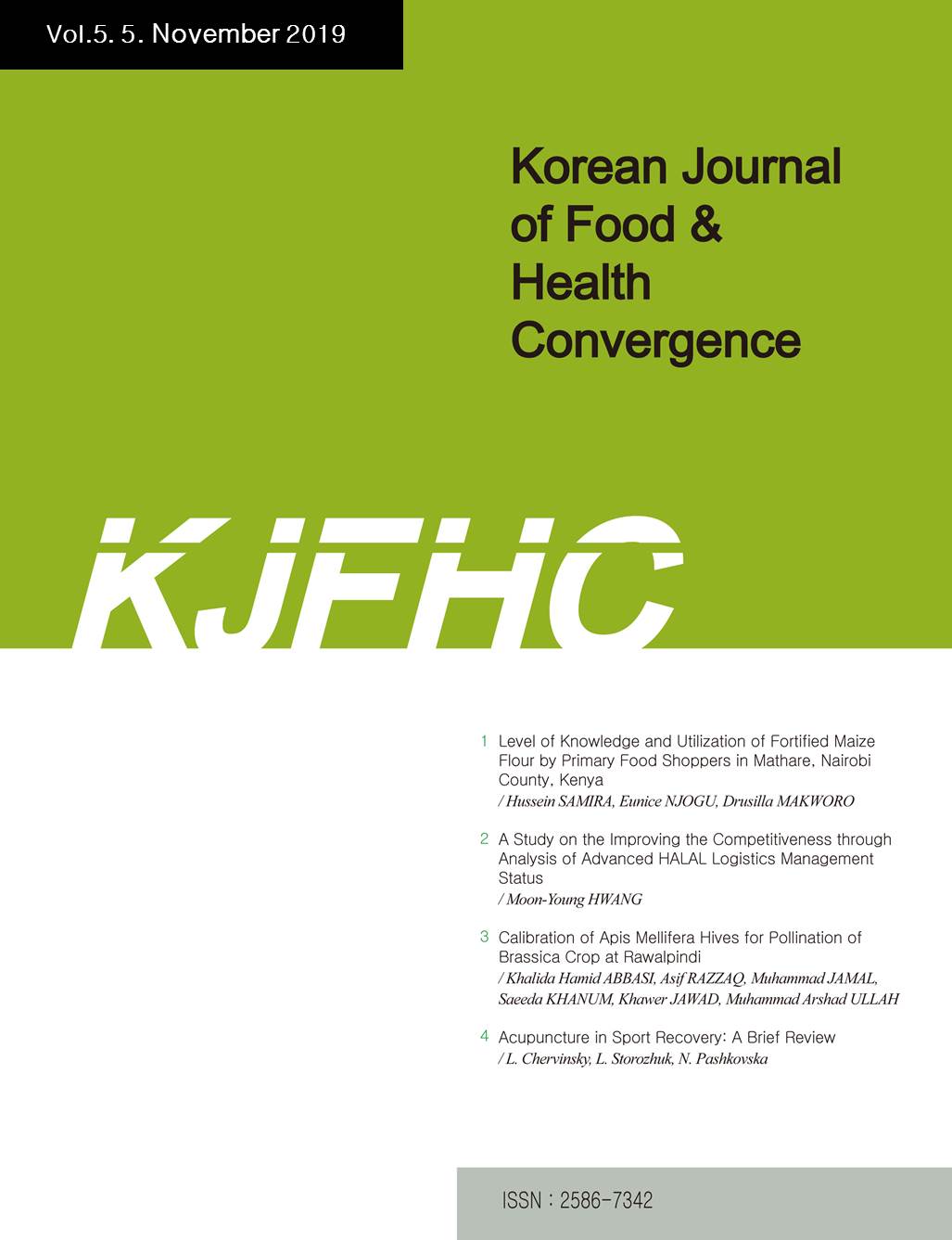 E-ISSN : 2586-7342
E-ISSN : 2586-7342
LEE, Min-Ho
JANG, Kyung-Tae
Abstract
We compared the fermentation of 0 to 4 weeks by manufacturing a rapid low salt-fermented seahorse with a commercial Protamex added to the functional food, Hippocampus abdominalis. We studied amino acid composition, content and major amino acids related to flavor during the fermentation process of salt-fermented seahorse. In the enzyme-free group, it showed little change in the content of non-protein nitrogenous compounds, the content of amino acids and degree of hydrolysis. The Protamex enzyme treatment group was rapidly hydrolyzed in one week of ripening, resulting in increased non-protein nitrogenous compounds content, amino acid content and degree of hydrolysis, and minimal changes in the four weeks. The total amino acid contents ratio showed the highest content of glutamic acid in the enzyme additive group, glycine, alanine, which indicates sweet taste, and serine, the content of glycine, alanine, serine, and lysine, indicating sweet taste, has increased significantly over the enzyme-free group. Twenty species of free amino acid in the four-week of salt-fermented seahorse were detected. It detected 43.0% (6 species) in the enzyme-free group and 63.96% (7 species) in the enzyme additive group.
- keywords
- Sahorse, Hippocampus abdominalis, Salt-fermented, Protamex, Amino acid
- Downloaded
- Viewed
- 0KCI Citations
- 0WOS Citations
